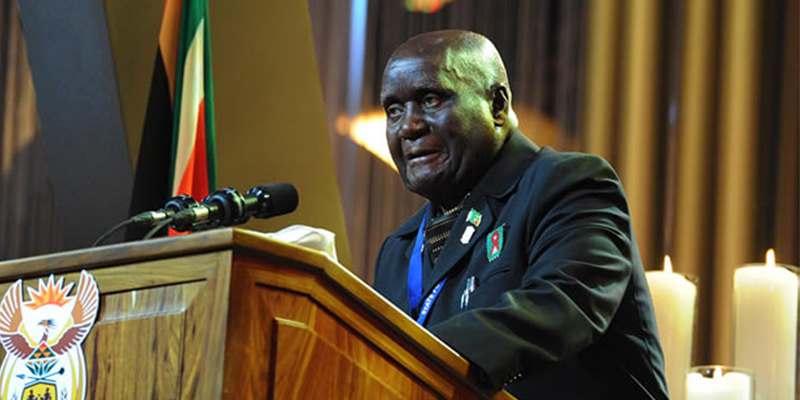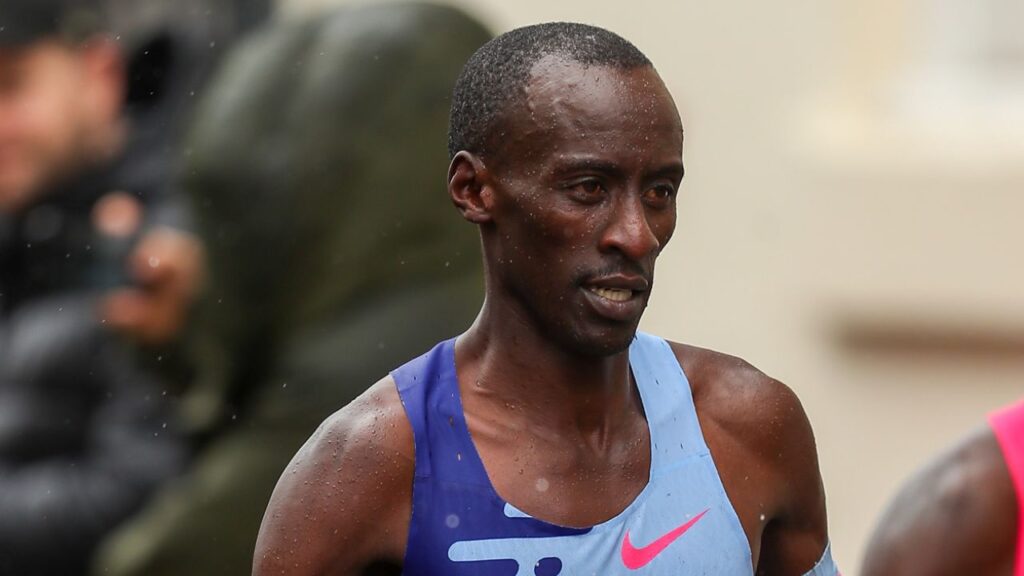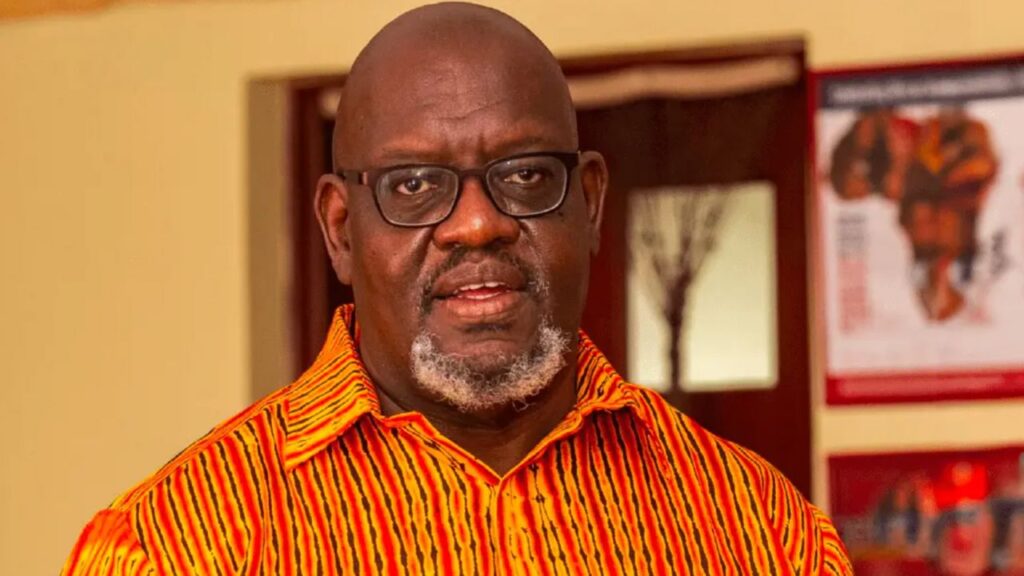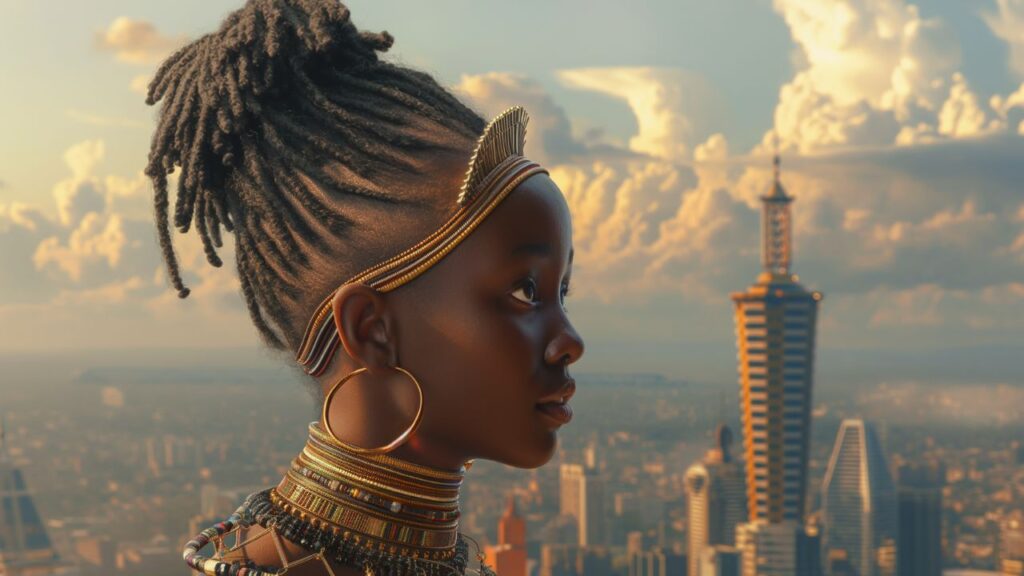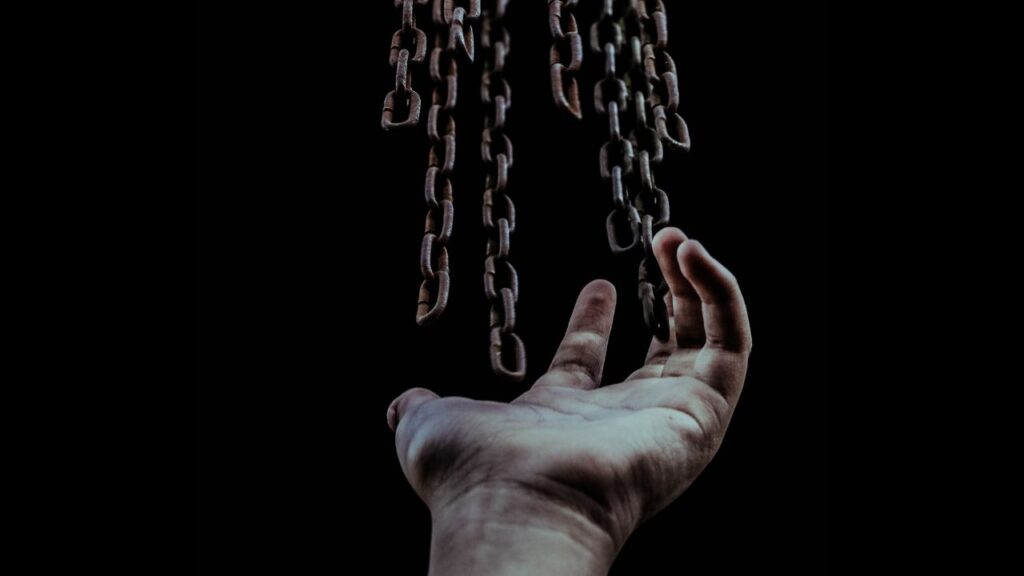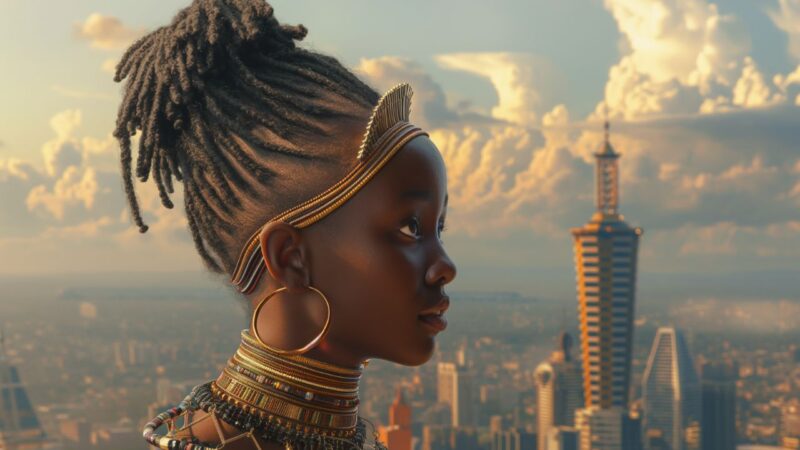Ten years ago, I was sitting together with other invited guests during the Republic of South Sudan independence celebrations on the day that South Sudan was declared a free nation, when I saw an elderly man with a white handkerchief in his hand, walking slowly towards the podium. The independence celebrations were already underway and the podium was crowded with African heads of states. The stadium was quiet, possibly because everyone was puzzled that this elderly man was walking towards the stage when everyone was already seated. When the master of ceremonies announced that the man was Kenneth David Kaunda the venue buzzed with excitement.
Everyone on the main podium where the heads of states and prime ministers were seated stood up and clapped until Mzee Kaunda was seated. Many of those seating near me were wondering how Kaunda had entered the stadium while all the presidents, including the host president, had already arrived. Foreign affairs officials of the United Republic of Tanzania later explained to me that Mzee was late because his flight had been delayed. The reception he received at the stadium showed the esteem with which the elders who started and led the struggle for freedom were held even in their retirement years. It was a big honour for the Republic of South Sudan that the former president of Zambia and the second Chairman of the Frontline States was present on the day the country became independent.
A few months later, around March 2012, I was lucky to meet Mzee Kaunda. I was in Lusaka on parliamentary business and I requested that the Zambian parliament afford me the opportunity to pay him a visit. Mzee Kaunda received me warmly in his office and we spoke about a number of African issues. The conversation was essentially Kaunda answering my questions about African liberation movements. I remember that as you enter his office, there is a photo of Mzee Kaunda, Mwalimu Julius Nyerere and Mzee Jomo Kenyatta taken at the airport in Nairobi as they wait for their flight to the United Kingdom.
This was before their countries became fully independent; it was the time of self-government, when both Kaunda and Kenyatta were Prime Ministers. Tanganyika had already obtained full independence, although this was prior to the formation of the United Republic of Tanzania. I asked Mzee Kaunda if he could remember when that photo was taken and he said that it was in January 1964. They were young, smart individuals who possessed a lot of self-confidence. Mzee Kaunda explained to me how at the time, Africa had a lot of hope and he spoke of his very close relationship with Mwalimu Nyerere and even with Mzee Kenyatta, although their politics were not very similar. All three are now no longer with us. Mzee Kenneth David Kaunda passed away on Thursday 17th June 2021 in Lusaka, Zambia.
Kenneth Kaunda, popularly known as KK, was the only surviving founding president of an independent African state. But he was not a founding president of the Organisation of African Unity (OAU). Zambia was not an independent state when the OAU was formed on the 25th of May 1963 and neither Kaunda nor Jomo Kenyatta were amongst the leaders who signed the OAU Charter. Zambia joined the OAU on the 26th of February 1965. It is however easy to assume that KK was a founder of the OAU as he was at the forefront of the independence struggle in Africa and because Zambia gained independence shortly after the OAU was formed. KK believed strongly in the OAU and took part in almost all its meetings. He became the Chairman of the OAU in 1970 at the 7th meeting of Heads of States in Addis Ababa, Ethiopia.
As Zambia gained its independence, Mozambique and Angola were engaged in the struggle for independence from Portuguese colonial power, while South Africa and Namibia were fighting the white supremacist apartheid regime. And although Zambia was surrounded by countries that had already gained their independence — Zaire (now Democratic Republic of Congo (DRC)) and Malawi — it only had close relations with Tanzania and Botswana. Under Kamuzu Banda, Malawi had close relations with Apartheid South Africa while Zaire was used by Western nations against liberation movements. Zambia was going through trying times. Being a landlocked country, the country could either transport goods through the ports of Beira and Nacala in Mozambique, which was under Portuguese rule, or through Southern Rhodesia (present-day Zimbabwe), which was under Ian Smith’s settler rule. This is where Kaunda’s leadership underwent trying times – to protect his country’s interests by cooperating with the apartheid regime or to support the struggle for freedom from colonialism in Africa. Kaunda chose the latter option at a very high cost.
Kenneth Kaunda, popularly known as KK, was the only surviving founding president of an independent African state.
President Kaunda started the Mulungushi Club together with President Nyerere and President Milton Obote of Uganda whose aim was national reconstruction. Unfortunately, President Obote was overthrown by Idi Amin in 1971, leaving only Kaunda and Nyerere. They invited President Seretse Khama of Botswana to one of their meetings, during which, for the first time, the name Frontline States was used. That first meeting was held in Lusaka, Zambia and Mwalimu Julius Nyerere was the first chairman of the Frontline States, contrary to custom which dictates that the president of the host state should be chairman. Mark Chona, special assistant to President Kaunda, has documented in the Hashim Mbita Project – Southern African Liberation Struggles Contemporaneous Documents 1960 – 1994 how Nyerere became chairman:
It was on the issue of releasing from prison the Zimbabwean freedom fighters, the first meeting was in October when I was sent to Cape Town and KK wanted to give a recap to President Nyerere and President Khama. Once seated Mwalimu said “oh! Kenneth, you are the host. I request that you should be the chairman” and KK said “No, Mwalimu please chair the meeting, I am only a host.” At the second meeting, Mwalimu again requested that Kaunda should be the chairman and again Kaunda said “No, no, you spoke very well at the first meeting, please continue to chair the meetings” and that is how Mwalimu Nyerere carried on as the Chairman of Frontline states until 1985 the end of his presidency in Tanzania. That is Mzee Kaunda then became Chairman and he continued with this role until he lost the election in Zambia in 1991.
President Kaunda is essentially remembered for his role in African liberation. In his time, Zambia served liberation movements, resolving disputes within the movements, providing financial assistance and preparing them to run their countries. Zambia came under military attack from Ian Smith’s Rhodesia and Apartheid South Africa and was even threatened with nuclear bombing by the Apartheid regime. In order to stop Zambia from being dependent on the ports in Mozambique and South Africa, President Kaunda and President Nyerere decided to seek assistance from China to build the TAZARA railway. At one point, Zambia also started efforts to develop a nuclear bomb to be used against South Africa.
Members of the Frontline States increased to six when Angola, Mozambique and Zimbabwe gained independence. The biggest task remaining was to liberate Namibia and South Africa, both of which became independent in 1991 and 1994, respectively. Mzee Kenneth Kaunda was at the forefront in ensuring the success of the liberation struggle, during which many lives were lost.
Kenneth Kaunda’s power handover was a big lesson on democracy for Africa when he conceded defeat in an election and handed over the presidency to Frederick Chiluba in 1991.
Kenneth Kaunda also made decisions that either brought misunderstandings between him and his fellow leaders of the Frontline States, or convinced them to take positions that were contrary to those of the OAU. Three issues will be remembered the most. The first was recognising the secession of Biafra from the Federal State of Nigeria. This decision, which was made by only four countries in Africa – Zambia, Gabon, Ivory Coast and Tanzania – caused a lot of misunderstanding among African heads of states. Tanzania recognised the Republic of Biafra on the 13th of April 1968 and Zambia did the same a month later on the 20th May 1968. I was told by a former ambassador from Tanzania who had attended the 5th OAU general meeting which took place in September 1968 in Algiers, Algeria, where the issue of Biafra was discussed, that President Kaunda was verbally attacked by his fellow presidents to the point that he had to leave the meeting. His friend Mwalimu Nyerere did not attend the meeting but sent his friend Rashidi Kawawa instead. KK continued to believe in Biafra for a long time and in November 2011 he attended the funeral of Lt. Colonel Odumegwu Ojukwu, who had been the leader of secessionist Biafra.
The second issue was recognising Angola’s independence. Angola obtained independence from Portugal in 1975 following years of armed struggle. The 1975 military coup in Portugal opened the way for independence talks that were led by Zambia. As none of the country’s three liberation movements — the MPLA led by Augustino Neto, União Nacional para a Independência Total de Angola (UNITA) led by Jonas Savimbi and Frente Nacional de Libertação de Angola (FLNA) led by Holden Roberto — had control over Luanda, the OAU intervened and a vote was organised to decide which of the three parties would take over from Portugal.
The results of the vote did not produce an outright winner and OAU member states were very divided on this. At a meeting of African heads of state in Addis Ababa, President Kaunda gave a speech that showed his support for UNITA which really angered Mwalimu Nyerere and the Tanzanian delegation. Mwalimu Nyerere therefore decided against giving his speech and instead only said a few words in response to the president of Senegal.
Journalist and lawyer Jenerali Ulimwengu, who was in Addis Ababa as the Deputy Chairman of the Pan-African Youth Movement, told me that the situation had been very tense. The MPLA decided to enter Luanda and declare independence after Portugal surrendered the instruments of power. Jenerali, who was present in Luanda on independence day, will not forget that day; as Tanzania was seen as not principled despite sending the Vice PresidentAboud Jumbe to the celebrations. The issue of Mzee Kaunda, Jonas Savimbi and UNITA is an issue that has still not been understood.
The third issue is one that concerns Zambia. President Kaunda was severely punished by the settler government of Rhodesia and the apartheid regime of South Africa, to the point that Zambia’s economy completely collapsed. Kaunda had closed the border with Smith’s Rhodesia but TAZARA was unable to transport goods into Zambia. The people of Zambia blamed him for his politics of assisting liberation movements instead of focusing on Zambia’s interests. Contrary to his agreement with his fellow leaders, and contrary to his promise that he “would not open the border until Zimbabwe gained independence”, KK decided to open the border with Zimbabwe. In the meeting of the Frontline States a big dispute arose between Presidents Machel, Neto, Kaunda and Nyerere. Mzee Joseph Butiku, who was then Nyerere’s Chief of Staff, has said that it was one of the most difficult meetings he attended during his time with Mwalimu Nyerere. Butiku states that “in the middle of the meeting leaders began to cry. Our role as assistants is to make a record of the conversations, I simply wrote that ‘the presidents are weeping!’”. Zambia was eventually allowed to carry on with its plans. A similar thing happened to President Machel in 1984 following the Nkomati Accord with the Apartheid regime of South Africa and this led to Nyerere “chasing him away” when he went to give him a recap.
Zambia came under military attack from Ian Smith’s Rhodesia and Apartheid South Africa and was even threatened with nuclear bombing by the Apartheid regime.
Kenneth Kaunda’s power handover was a big lesson on democracy for Africa when he conceded defeat in an election and handed over the presidency to Frederick Chiluba in 1991. Kaunda was a president who was very modest to the point that by the time he relinquished the presidency, he did not own a house. When Chiluba took over, he gave Kaunda a hard time, going to the extent of imprisoning him for treason. Mzee Kaunda went on a hunger strike while in jail which he only ended when Mwalimu Nyerere visited him. Dr Levy Patrick Mwanawasa, the third president of Zambia, returned KK to the status of Father of the Nation, giving him all his dues as a retired president, which he continued to receive until his death.
In Development as Rebellion: Julius Nyerere A Biography, Prof Issa Shivji, Prof Saida Yahya-Othman and Dr Ng’wanza Kamata explain how shocked President Kaunda was by the terrible condition of the road to Butiama (Nyerere’s home village). He came to the conclusion that the driver had gone the wrong way as it was not possible that the road to the president’s house could be in such a terrible condition. But it is more shocking that President Kaunda did not have his own home when his presidency ended as he had served his country and never thought of himself. Without a doubt, the first generation of African leaders was unique and I do not think that Africa will get leaders of Kenneth Kaunda’s calibre again. May God rest his soul in peace.
Hamba Kahle KK. You are the last to depart. Greetings to Nyerere, Bibi Titi, Samora, Josina, Winnie, Mandela, OR Tambo, Lumumba, Neto, Mondlane, Hani, Chipeto, Marcelino and all the others who gave their blood and sweat to liberate us.

